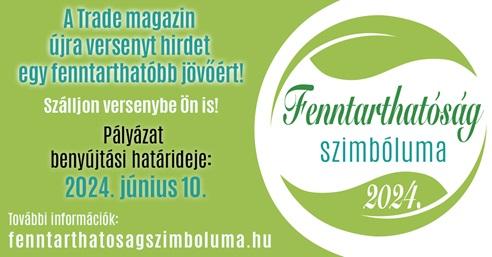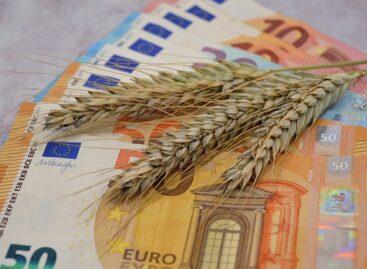Coffee in the spirit of circularity
As a leading coffee company, Nespresso has taken many steps to make its operations more sustainable along its entire value chain. Between 2014 and 2020, a total of 585 million Swiss francs were invested in the sustainability strategy called The Positive Cup, the details of which are also reported in the Joint Value Creation Summary. An extremely important pillar of this is ecological design: focusing on the principle of circulation and innovation, they design their capsules, accessories and coffee machines in such a way that the proportion of recycled and recyclable materials in them and their packaging is increasing.

(Photo: Nespresso)
Nespresso capsules are made of aluminum, which perfectly protects the coffee from air, moisture and light, so that the high-quality roasted, ground coffee remains as fresh as possible — right up to the moment of preparation. In addition, another important advantage of aluminum is that it can be recycled an unlimited number of times; aluminum is one of the most recycled materials in the world. So much so that 75% of the aluminum ever produced in the world is still in circulation today and can be found, for example, in the material of aluminum packaging in everyday use. In addition, if a product is made of recycled aluminum rather than newly produced, it means that significantly less energy is used during the production process. In 2020 — the first in the world — they introduced coffee capsules made of 80 percent recycled aluminum, and they aim to soon pack all Nespresso coffee for home consumption (both Original and Vertuo) in capsules made using recycled aluminum.
Collection of capsules is available to 100% of Hungarian customers
In order to strengthen the circular approach, the brand has built a worldwide capsule collection system, which is now available in 70 countries, and there are also places where capsules are collected within the framework of the state selective collection system. Nespresso — in cooperation with its customers and consumers — continues to increase the recovery and recycling rate of capsules, which is why it invests in initiatives that make aluminum recycling simpler and easier, and coffee grounds can be returned to the cycle as an energy source or as a material. In Hungary, Nespresso has been collecting used capsules in its Boutiques since 2012, and from 2017, customers can return their used capsules with the courier service when their orders are delivered, or drop them off at collection points. In our country, 100% of customers have some kind of recycling option. At the end of 2021, Nespresso’s global estimated recycling rate in take-back systems was 28%. In Hungary, the recycling rate of capsules is more than 40% and shows a growing trend, but the company aims to continuously increase this rate.
The last drop of coffee does not mean the end of use
All returned Nespresso capsules are recycled. The capsules collected back in Hungary are sent to the processing partner in Debrecen. Here, the weight of the used capsules is weighed upon arrival, and then they are collected in one place. The capsules are poured out of the collection bags and manual sorting follows, during which foreign materials are removed. After the capsules are dried, they are put into a special machine that cuts the capsules into smaller pieces. From there, they enter a shaking drum that separates the aluminum and coffee grounds. The latter goes into storage, while the aluminum is compressed or collected in bags and transported to an aluminum smelter, where it is melted down. Aluminum is reborn in the form of various household items, and coffee grounds are used in composting. Nespresso has developed a special growing medium from part of the coffee grounds from capsules collected back in Hungary, which is used to improve the soil of the lavender fields of the Pannonhalmi Abbey. The initiative is completely local: the capsules come from domestic consumers, and both their processing — the separation of aluminum and coffee grounds — and the production of growing medium are done in Hungary. The rest of the coffee grounds are reused during composting in the Debrecen area. A video of the entire process is also available.
However, recycling is not enough
Recycling is therefore an important part of the circular approach, but it is not only this that must be taken into account, the impact of a product on the environment does not consist solely of this. A life-cycle analysis by Quantis found that a cup of Nespresso coffee has a similar carbon footprint to drip, drip and filter coffee, and also found that the carbon footprint of the Nespresso system is 24% lower than that of a coffee grinder. of coffee machines. The environmental impact given to a Nespresso coffee is 41 percent in the usage stage, followed by the supply of green coffee at 32, and a package is in third place with its 13 percent. In order to reduce the effects of green supply on the environment, Nespresso focuses on regenerative agriculture, in addition to recycling, environmentally conscious product development and design, the use of renewable energy sources, and logistics optimization.
The solution starts with protecting farmland
This year, on the occasion of World Coffee Day, the company presented its campaign called The Empty Cup, which draws attention to the negative effects of climate change, which threatens global coffee production. In the images accompanying the campaign, George Clooney, the brand’s ambassador, holds an empty coffee cup in his hand, symbolizing the risk faced by many coffee producers today, including the 140,000 farmers who work closely with Nespresso. Climate change currently threatens 60 percent of wild coffee varieties, and by 2050, 50 percent of the land used for coffee cultivation may become unfit for cultivation. Better Arabica varieties are particularly sensitive to strong weather shocks. Preserving high quality and securing its future has been central to Nespresso’s strategy for 20 years. The Nespresso AAA Sustainable Quality™ Program, launched in 2003 together with the Rainforest Association, aims to increase the quantity and quality of the crop, thereby protecting the environment and improving the quality of life of producers and communities. The long-term, sustainable cultivation of high-quality coffee is a key key for farming communities to be able to protect their plantations from the effects of the weather and, at the same time, to combat the causes of climate change. For Nespresso, the tool for this is regenerative (soil renewal) agriculture, that is, an approach that does not reduce the emissions of the global agricultural and food industry, but also makes farmland more resistant to the effects of climate change. That’s why we are the company also helps farmers who work closely with them globally to switch to regenerative methods.
30 years on the road to sustainability
Since its founding in 1986, Nespresso has continuously strived to make a positive impact on the coffee industry. The company’s business activities have been carbon neutral since 2017, and in 2020 it set a new goal to reduce carbon dioxide emissions in other parts of the supply chain and in the life cycle of its products. In 2022, each cup of Nespresso coffee will be carbon neutral, as certified by The Carbon Trust. Compared to the 2009 level, Nespresso has reduced its carbon footprint per cup of coffee to 24, and with several partners (the Pur Projet organization) will plant 6 million trees by the end of 2021. As an important recognition of its efforts, Nespresso has obtained the B Corp™ certificate, one of the most important global sustainability recognitions. B Corp is a global community of companies whose members work for their employees, suppliers, consumers, the community and the environment. B Corp companies represent change and do business with the goal of benefiting all stakeholders through their products, practices and profits.
Related news
Edeka builds a recyclable supermarket
Germany’s leading supermarket chain Edeka is building a new store…
Read more >Mondelēz seeks to work with tech startups focused on ingredients, packaging and sustainability
The snacking giant said the companies it partners with as…
Read more >Munkahelyeink.hu: in the field of AI and sustainability, the demand is increasing mostly for employees
In the era of rapid technological development and the increasing…
Read more >Related news
Euro zone inflation was 2.4 percent in April as well after March
In line with analysts’ expectations, annual inflation in the euro…
Read more >Gergely Suppan: the recession is clearly over in Hungary
The recession is clearly over in Hungary, from now on…
Read more >K&H: the inflation anomaly is clearly visible, but customers perceive it differently
Although inflation has slowed down a lot, according to the…
Read more >







